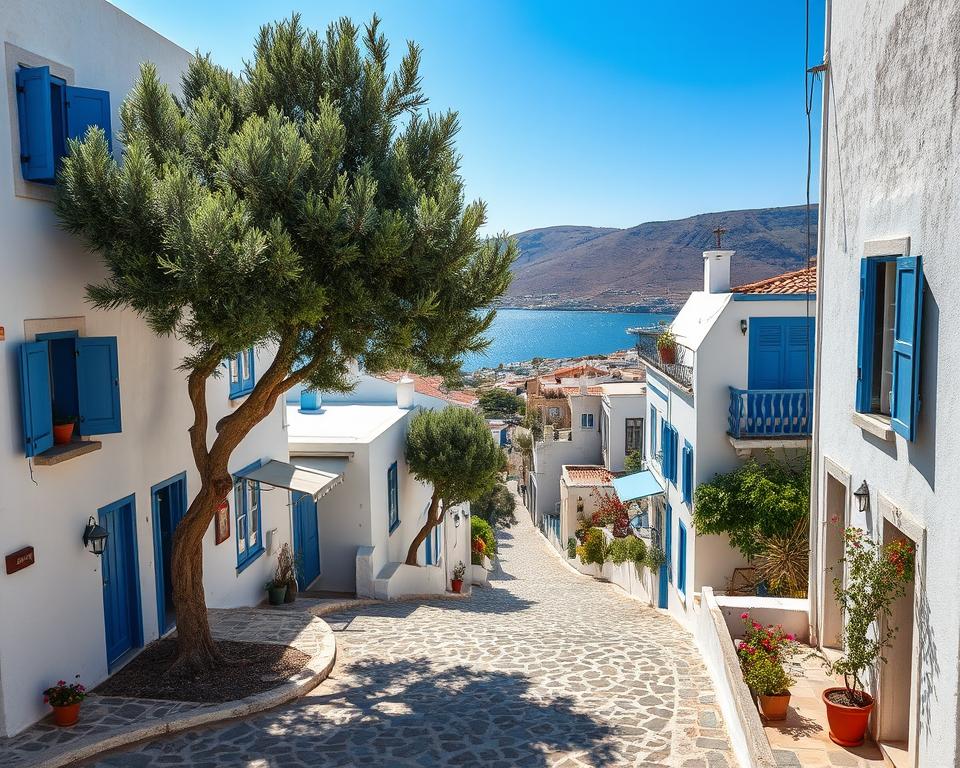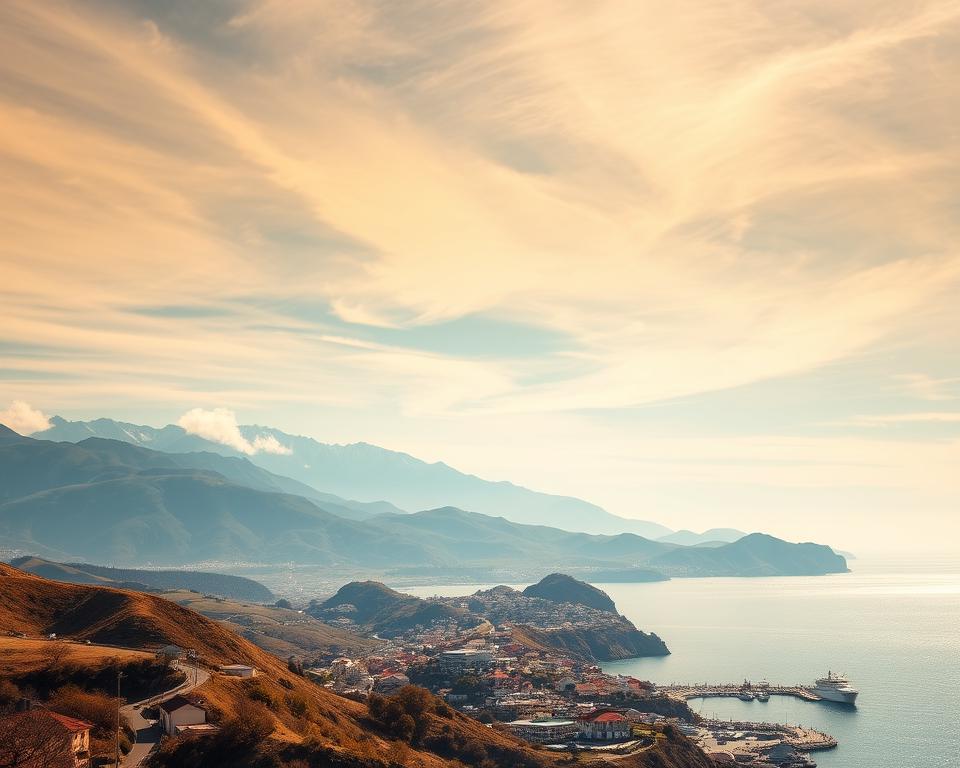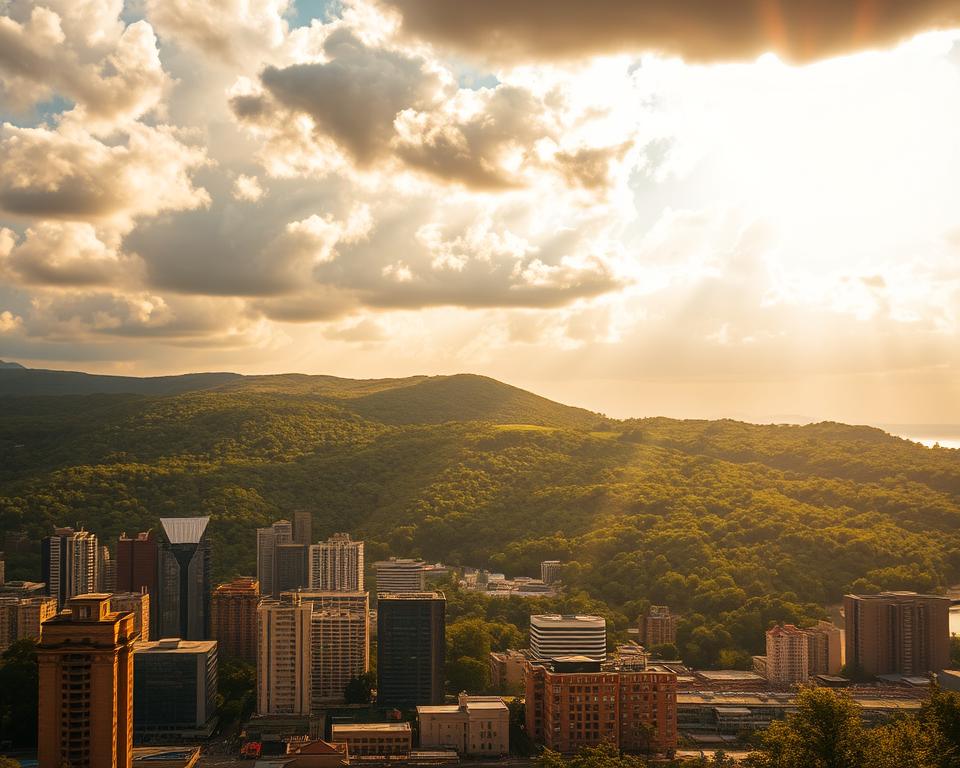Anúncios
Underrated travel destinations can change how you think about the world. Have you ever wondered which small towns still feel local yet offer easy access, safety, and great food?
This short post is a place-by-place list that helps you avoid crowds, skip long lines, and tap into living towns with real history. You’ll see concrete examples like Brașov, Sighișoara, Paros, Verona, and Kilkenny—each with easy rail or road options discovered in recent years.
Why this matters for 2026: transport links, eSIMs, and offline maps make these spots simpler to reach than before. The picks focus on culture, nature, and food, not extreme or unsafe outposts, so you can plan a realistic trip that balances discovery and downtime.
You’ll get practical things you can act on: how to pair each destination with a major city, rail or bus tips, and budget cues that help people plan timing and routes responsibly.
Introduction: why underrated travel destinations in Europe belong on your 2026 list
This post highlights compact European cities and towns that pair easily with major hubs for a calmer, richer trip. It’s a short, practical list that helps you plan time, reduce queues, and see places that still feel local.
Anúncios
What “hidden” really means
Hidden here means smaller city or town clusters in a country with basic services, decent transit, and a steady trickle of tourists — not places without support.
Think safe streets, good dinner options, and simple public transport that gets you to a major city in under a few hours.
Trip design made simple
Pair a marquee city with a nearby, quieter spot to cut costs and crowding. For example, use Naples as a gateway for archaeology, or base in Verona and catch an Arena night without hotel premiums.
Anúncios
Allow buffer time between transfers, check official tourism board sites and embassy advisories for hours and entry rules, and favor shoulder seasons for lower prices and lighter foot traffic.
- Scope each stop as a day extension, an overnight, or a two- to three-night stay.
- Explore residential neighborhoods to get a hidden-feeling day even in busy cities.
- Adjust the plan to your time and interests, and always respect local norms.
How to use this listicle to design your trip
Use well-connected cities as launch points, then spend your time exploring nearby regions at an easy pace. This list shows practical pairings so you can build efficient trips that cut transfer hours and increase local time.
Pairing strategy: Fly into a major hub, then branch by rail, bus, or rental car into a compact region. Cluster towns into castle corridors, vineyard belts, or mountain valleys so each move feels scenic, not rushed.
Tools to plan smarter: Use official tourism board sites for event calendars and museum hours. Download offline maps and install an eSIM (Holafly or Airalo) so navigation works the moment you land.
- Start with a hub, batch long transfers in the morning, and keep afternoons free for walks or museums.
- Plan one flexible day per region to absorb delays, and prioritize a few things each day instead of packing every hour.
- Book key time slots early, pack light for cobbled streets, and mix a city museum with a short rural hike to balance your time.
Practical tips: Check official sites before you go, set offline directions at home, and treat this list as a way to shape doable, memorable days rather than a strict itinerary.
Veliko Tarnovo and the cave-rich hills of Bulgaria
A compact hilltop layout and layered ruins make Veliko Tarnovo an easy base for history and hikes.
Why it’s special: Tsarevets and Trapezitsa sit close together, so you can walk centuries of Roman, Ottoman, and Bulgarian Empire layers in a few hours. The old town’s ramparts give clear viewpoints without long waits.
On-the-ground tips
- Crowds: Interior Bulgaria sees fewer tourists in summer than the coast, so you’ll often have viewpoints to yourself.
- Day trips: The surrounding region is dotted with caves and karst; a short hike into cave-rich hills pairs well with an urban morning.
- Transport: Intercity trains and buses run reliably, but verify timetables a day in advance and allow buffer time.
- Food & budget: Hearty grills, shopska salad, and bakeries keep meals affordable. Carry cash for small entrances and rural cafés.
- Stays: Pick lodging within walking distance of the old town to avoid steep climbs at night.
Plan your time by splitting a day between fortress circuits and a shaded Yantra River hike. Add nearby villages and monasteries to see quieter residential courtyards. For current hours and visitor rules, check a reliable source like this Veliko Tarnovo guide.
Gjirokastër and the Vjosa Wild River corridor, Albania
A day here mixes Ottoman-era lanes, a hilltop castle, and a short drive to the Vjosa Wild River — Europe’s first major wild river national park that is opening new eco options.
Fresh headlines
The Vjosa corridor protects one of the last free-flowing rivers in Europe and shapes how you plan nature outings in the region.
Practical planning
Albania is modern in its cities but can feel less developed outside urban centers. Give yourself extra time for transfers and download offline maps.
- Map one day: morning in Gjirokastër’s stone streets and castle; afternoon hike into nearby mountains; evening local food.
- Pairings: nearby Ottoman-era towns make easy day trips across the corridor.
- Shoulder seasons (spring, fall) offer mild hiking time and softer prices.
Price cues & tips
Food ranges from cheap byrek to modest prices for grilled meats and salads. You’ll find a lot fewer crowds inland than on the beaches midweek.
Book guided river activities only with licensed operators who respect park rules and check official sites after heavy rain.
Transylvania’s Saxon towns: Brașov, Sighișoara, and beyond
The Saxon towns of Transylvania pair medieval streets with broad forested ridges, making this region easy to explore by car. You’ll find lively squares, fortress churches, and hiking options that do not demand special gear.
Why you’ll love it: medieval charm, wildlife-rich forests, and road-trip flexibility
History shows in fortified churches and layered town plans that grew from Saxon settlement patterns. Mountains and woods frame castle views and occasional wildlife sightings, so stay respectful and keep distance.
Designing days: fortress churches, scenic drives, and coffee culture stops
Plan a two- to three-day trip linking Brașov and Sighișoara with nearby Saxon villages. Use one town as an anchor, then loop out for short drives, a morning hike, and slow lunches at bakeries.
- Day rhythm: one anchor site, one scenic drive, one short hike, one slow dinner.
- Route idea: Brașov morning lookout and cafe; drive to Sighișoara via Rupea and fortified villages.
- Extra time: add a loop toward Apuseni caves or karst viewpoints if you can.
Practical tips: park near town centers, top up fuel before rural stretches, and check Romania’s official tourism pages for fortress hours and seasonal events. These simple steps make the place feel more like home and improve your overall experience.
Paros’s quieter corners: Lefkes and hillside villages, Greece
Paros offers a softer pace in Lefkes and nearby hamlets, where Cycladic lanes lead to tavernas and coastal views. You’ll trade noisy harbors for shaded courtyards and slow afternoons.

Island time, minus the rush: Cycladic architecture, village tavernas, and coastal paths
Start your day in Lefkes. Walk narrow streets, visit church courtyards, and sip coffee in a shaded corner.
- Beaches vs. paths: Pick one beach for a morning swim and one coastal path for an afternoon walk to balance sun and sight-seeing.
- Heat tips: In summer, plan early swims or late strolls to avoid the worst of the day.
- Food: Look for grilled fish, Greek salads, and local cheeses at family-run tavernas—you’ll find authentic plates off main streets.
- Getting around: Scooters save money, buses run on limited schedules, and cash helps at small bakeries.
- Extras: Book a short boat tour of nearby coves when winds are calm, and consider a two-island hop to Naxos or Antiparos for variety.
Practical tip: Stay a lane back from the harbor for quiet nights and easier parking. Explore one inland village and one seaside hamlet each day so you see more without rushing.
Briançon in the Hautes-Alpes, France
If you like stone ramparts and quick walks into the mountains, Briançon makes a compact base for four-season outings. The town pairs UNESCO-listed Vauban fortifications with a fortified old town where evenings feel calm and atmospheric.
High-altitude heritage: Vauban fortifications, mountain air, and four-season appeal
Walk a heritage loop through the Vauban walls and narrow lanes, then stop at a cafe to soak up the mountain air. Evenings in the old town are ideal for slow dinners and a post-meal stroll along the ramparts for broad valley views.
Activity mix: hiking, cycling routes, and easy day trips into alpine valleys
For a sensible day hike, choose a marked trail with gradual ascent and refill water at the trailhead kiosks. Check altitude gain and plan rest breaks to avoid overexertion.
- Hiking: summer wildflower walks; shoulder season larch color; winter heritage strolls near town.
- Cycling: valley-floor routes for easier rides, or mountain passes if you are fit and the weather is stable.
- Nearby nature: Ecrins National Park is close—visit the main visitor centers to confirm trail and road status before you go.
Transit and parking: use public parking outside the historic core and walk or take the shuttle into the pedestrian sectors. If you drive, allow extra time for narrow streets and seasonal controls.
Places to base yourself: consider a guesthouse in town for quick rampart access, or a nearby spa hotel if you want post-activity recovery. Check the departmental tourism board site for fort interior hours and any guided tour schedules.
Weather windows and gear: bring layered clothing, sun protection at altitude, and a light windproof. Plan time of day for activities to match temperature swings and to make the most of this small, high-altitude city experience.
Kilkenny’s medieval mile, Ireland
Kilkenny packs castle views, narrow lanes, and lively pubs into a compact walk that works as a long afternoon or an easy overnight.
Culture in a compact package: castle-to-cathedral strolls, trad music, and local pubs
Start at the castle and follow the Medieval Mile toward St. Canice’s Cathedral. Pause for courtyard views, a small museum stop, and a bakery treat to keep going.
Plan your time: allow 30–45 minutes at the castle, 15–20 for alleyway shops, and 30 minutes at the cathedral tower if you climb.
- Choose a pub for trad music by scanning chalkboards or asking locals what’s on that night.
- Pick simple food—pies, soup, and bakery snacks—to stay fueled without a long sit-down.
- Check ticket times and opening hours that morning so you avoid closed doors.
Pop into artisan shops for crafts tied to county history. Try a sunrise walk on quiet lanes for photos before cafés open.
Why go: this small town has a dense slice of Irish history and friendly people. A few years ago it felt quieter; today it still ranks among underrated destinations that fit neatly into a longer Ireland route—a practical stop between a major city and other rural sites.
Banchory and Royal Deeside, Scotland
Set on Royal Deeside, Banchory is an easy stop for riverside viewpoints, mellow hikes, and small-town cafés. You can pair a morning castle visit with an afternoon woodland loop without a long drive.
Castles and salmon runs: easy woodland walks and riverside viewpoints
Start the day at a nearby estate or castle for a short tour and local history. Then walk a riverside path along the River Dee for clear salmon-viewing spots in season.
- Easy day plan: castle in the morning, riverside nature walk after lunch, tea and soup in a local café to warm up.
- Salmon viewing: late summer and autumn are best; keep a respectful distance and avoid disturbing spawning areas.
- Hiking & parking: pick short loops that suit your fitness; most trailheads have small car parks and clear signposts.
- Half-day detour: Cairngorms National Park sits within reach for a visitor center stop if you want mountains and broader trails.
If rain moves in, book a tour at a heritage garden or indoor site. Banchory has a few independent boutiques and cafés where you can dry off and plan the next activity.
By bus or self-drive you’ll find sensible fuel and restroom stops along Royal Deeside. Check estate websites for seasonal closures and carry layers—Scottish weather can change in a short time. For photos, aim for softer morning or late-day light at river viewpoints to get the best shots.
Verona’s understated romance, Italy
You can see Verona’s amphitheater, stroll a golden-hour bridge, and still have time to savor a long dinner without rushing. The city feels compact and culture-rich, so two relaxed days cover the main sights and slow moments.
Beyond the headlines: amphitheater nights, slow-food trattorias, and neighborhood stays
Book a night at the Arena well in advance and plan a slow late dinner nearby to make the evening special. Check the Arena’s seasonal calendar—performance timings affect lodging and prices.
Choose quieter residential quarters for neighborhood stays. You’ll walk into the center each day and save on hotels by picking a local guesthouse or housesitting option.
- Trip flow: one major site, a bridge walk at golden hour, then a relaxed trattoria meal.
- Food cues: look for regional pasta or risotto on traditional menus and pair with local wines.
- Mornings: start with a café-and-pastry routine and visit markets to picnic beside the Adige.
Practical tip: learn a few Italian phrases for friendlier service, verify performance start times on the official Arena site, and you’ll find Verona an easy, memorable place to add to your list of small towns and underrated destination stops.
Naples gateway, local gems: archeology, street life, and day trips
Naples gives you a high-energy city base with museum-quality archaeology and easy coastal escapes. Start your mornings where the artifacts are and spend afternoons in narrow lanes or on a ferry to nearby beaches.
Smart routing: pair city grit with serene islands and ancient sites
Split a day: morning at the National Archaeological Museum to see Pompeii and Herculaneum finds; then walk historic streets to absorb street life and grab a late lunch.
- Day trips: pair one full day with an island hop or a coastal beach to reset and breathe sea air.
- Tours: book an organized archeology tour for Pompeii or Herculaneum if you want context without heavy pre-reading.
- Mount Vesuvius: treat the volcano as a short mountain outing—check timed-entry rules and reserve slots when required.
Pizza is essential: favor small counters near stations or neighborhoods like Spaccanapoli for authentic slices without long detours. For night people-watching and gelato, try piazzas in the historic center or the seaside promenade.
“Plan one major site a day and pair it with a single neighborhood or island—less rushing, more depth.”
- Buy return ferry tickets and confirm last sailings before you go.
- Use regional trains for short inland hops and ferries for island legs; check schedules each morning for strikes or service changes.
- Carry minimal cash, safeguard valuables in crowded alleys, and verify opening hours on official sites before you leave.
underrated travel destinations you can pair in one itinerary
You can stitch smaller towns and cities into smooth, manageable routes that reduce transit time and increase local time. This way you get both a major city night and a quiet village morning without overpacking your schedule.
Sample routes: Balkans loop, Alpine arc, or Italy-Greece cultural chain
Balkans loop: link Bulgaria’s medieval cores with the Vjosa Wild River national park in Albania and finish with a coastal breather. It mixes history, river nature, and beaches in one country-spanning arc.
Alpine arc: pair Briançon and Ecrins valley villages for short hikes, village cafés, and fortified town nights.
Italy–Greece chain: plan Verona for an amphitheater night, then Naples for archaeology and pizza, followed by a short flight or ferry to a calm island for relaxed days.
Timing it right: festivals, shoulder seasons, and weather windows
- Keep hops short: aim for one city and one small place per leg so transfers stay under a few hours.
- Summer cautions: avoid peak heat and holiday closures by favoring shoulder-season weeks for easier lodging and quieter trails.
- National park notes: check trail openings, road work, and weather windows before you go.
- Transport checks: include ferry and mountain pass schedules when you decide directions and days.
“Log bookings and confirmations in one document so changing plans on the fly is easier.”
Practical tip: scan festival calendars early if you’re looking to add live music or local fairs. That small step can turn a good trip into a memorable one.
Conclusion
A good rule: aim for one major city night and one small place the next day. That way you see more without burning out.
Interiors like Bulgaria and Transylvania give space and calm. Albania’s Vjosa national park, Paros villages, Briançon ramparts, Kilkenny’s Medieval Mile, and Naples as a gateway all show different ways to mix culture and nature.
Double-check closures with official tourism boards, park sites, and transport operators before you go. Leave room for a beach or island day if it helps your energy.
Pack light, respect local norms, and keep noise down in residential lanes. Capture a quick note after each stop — what felt like home, what you loved — to refine the next leg.
Use this list as a launchpad. Plan responsibly, stay curious, and enjoy the unique experience each place offers.



